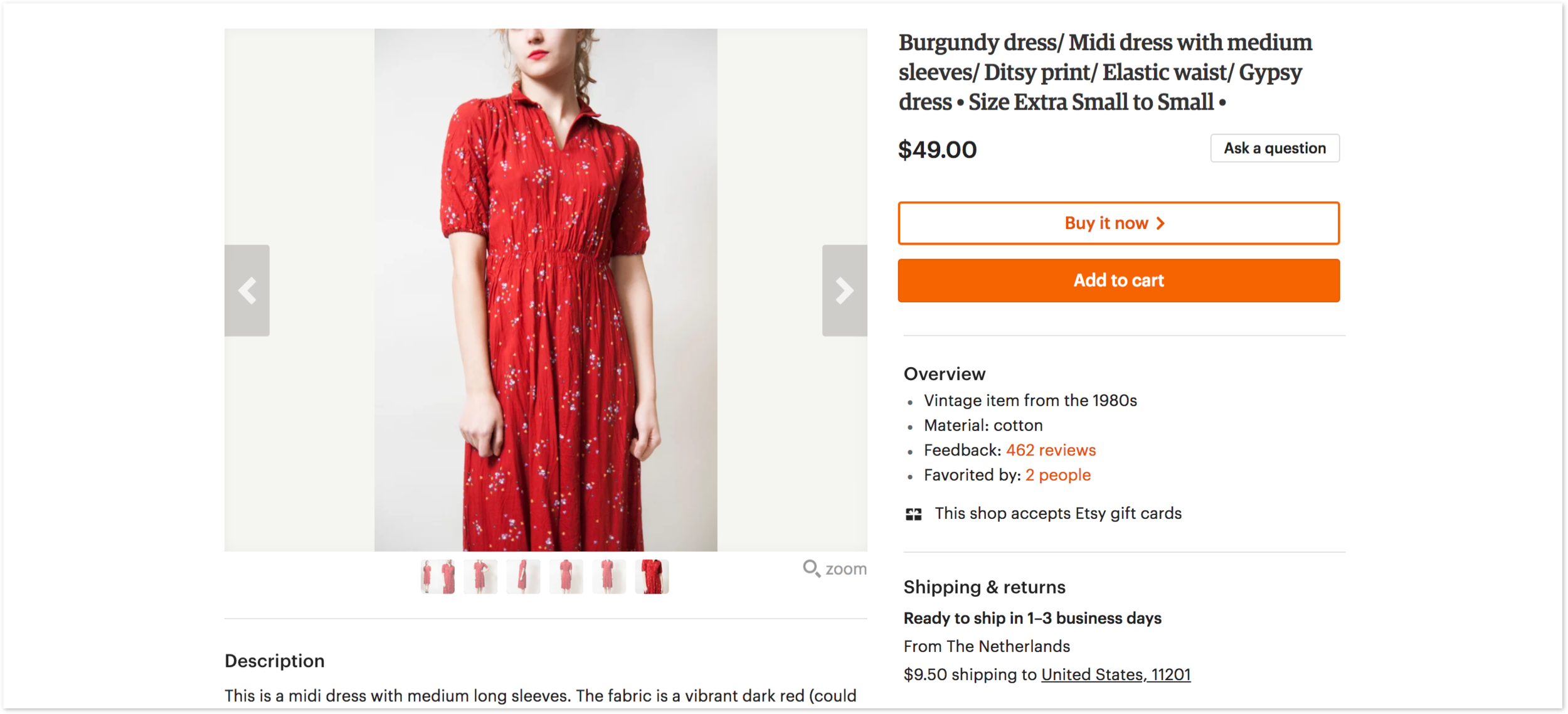Etsy Product Design
ROLE: DESIGNER
TEAM: 4 DESIGNERs, 1 ENGINEERING TEAM, 1 COPYWRITER, 1 project manager
RELEASED: October 2018
I was part of a pilot program that redefined the way product teams work at Etsy. We transitioned from the “waterfall” method of working into agile, cross-functional teams of designers, copywriters, engineers, and project managers. In this pilot, our task was to improve Etsy’s inventory quality through outcome-based work.
Our two outcomes were to (1) provide the right information for the product and (2) make sure Etsy surfaces products that buyers are excited to purchase.
We broke this outcome into separate, testable hypotheses.
Hypothesis 1: Because the research tells us adding attributes is a lot of work, we believe that helping sellers add attributes more quickly and easily will result in sellers adding more attributes.
One proposal of value that we tested was focused on increasing attribute adoption. On Etsy's platform, Etsy Sellers have the option to select category-specific attributes (e.g. if you're in the rug category, you can select the type of rug—runner, area, accent, etc.). Prior to the experiments, attribute adoption was low, and, because of this, Etsy Buyers had been unable to filter to find the perfect item.
We kicked off by having a brainstorm of different tools we could build to help sellers add attributes quickly. From there, another designer and I separately worked on a few dozen mock-ups. I opted for a tool that added one attribute at a time since our project manager kept encouraging us to distill the experiment down into the smallest slice of value.
We went forward with this idea of quick-adding a single attribute, further refining it into the final flow for an A/B test (seen below).
Hypothesis 2: Because the research tells us important item information often lives in the description and is often repeated throughout the listing, we believe that pulling unstructured data out of the description and asking sellers to move it to the attribute fields will result in higher attribute adoption.
To kick off this hypothesis, another designer and I worked through a dozen quick sketches in the morning, ranging from low engineering lift (such as a reminder) to a more intensive tool (such as a smart adding feature). In the afternoon, we met with the project manager, who wanted to go forward with a more intensive option.
The lightweight notification solution.
The more intensive-to-build option.
We collaborated to refine the functional and visual aspects of pulling the attributes from descriptions before I handed it over to the engineers.
Hypothesis 3: We believe that improving where and how we display attributes on the listing page will result in buyers finding the information they need to make a purchase decision and sellers being more likely to add attributes.
I kicked off this project with another designer by focusing on the overview section of listing pages.
A ‘before’ photo of a listing page. The Overview section is a list of bulleted points.
We collaborated to refine the typography and add a callout for what makes a particular item on Etsy 'special' with an icon. I drew the iconography in a new brand refresh style (inspired by paper-cutting) that had been slowly making its way into the product over the past several months.
We worked with our copywriter and project manager to revise the language accompanying these icons. We tested the iconography and text with buyers in lo-fi research sessions.
With a few valuable insights from research (everyone thought 'made to order' meant personalization) we made final copy decisions and handed the work over to engineering.
We received great feedback from Etsy Sellers during this experiment (a rarity on the Etsy forums).










